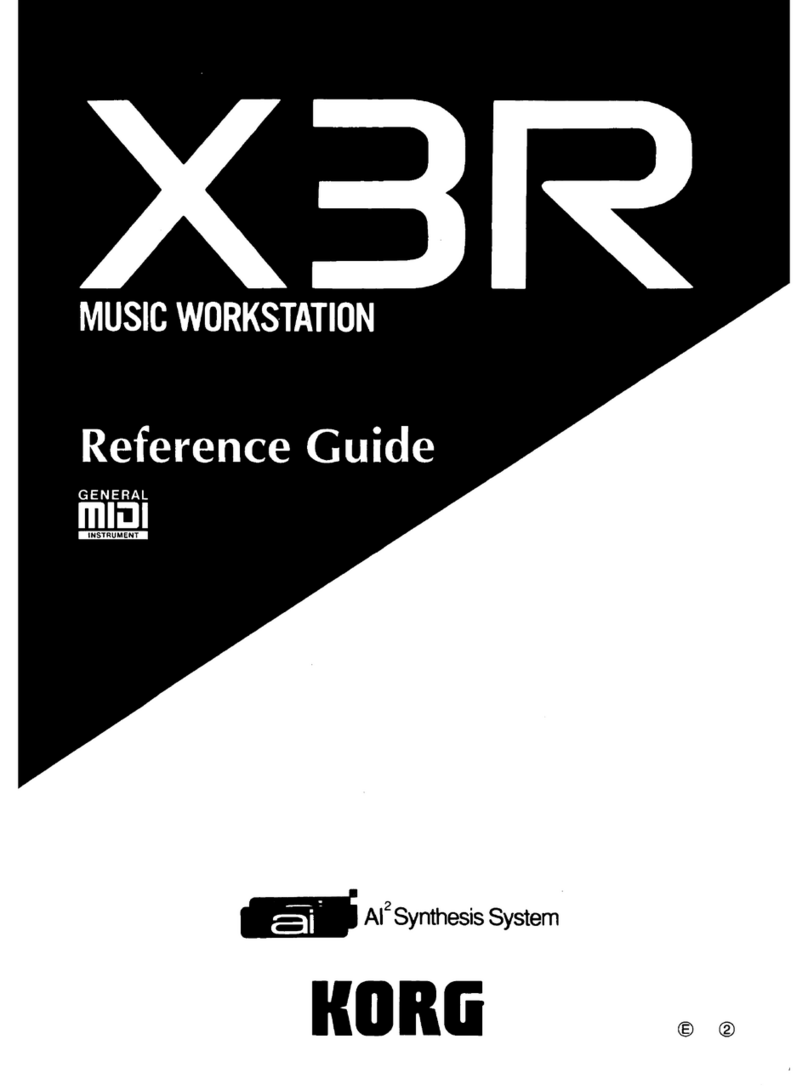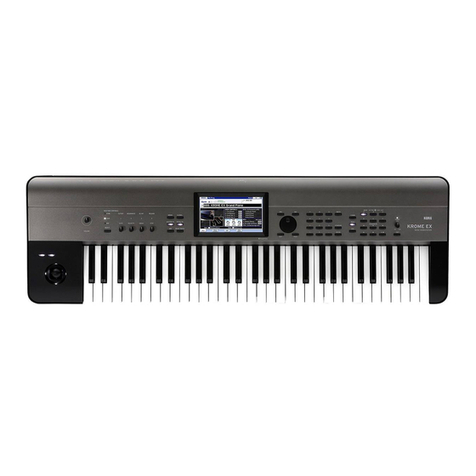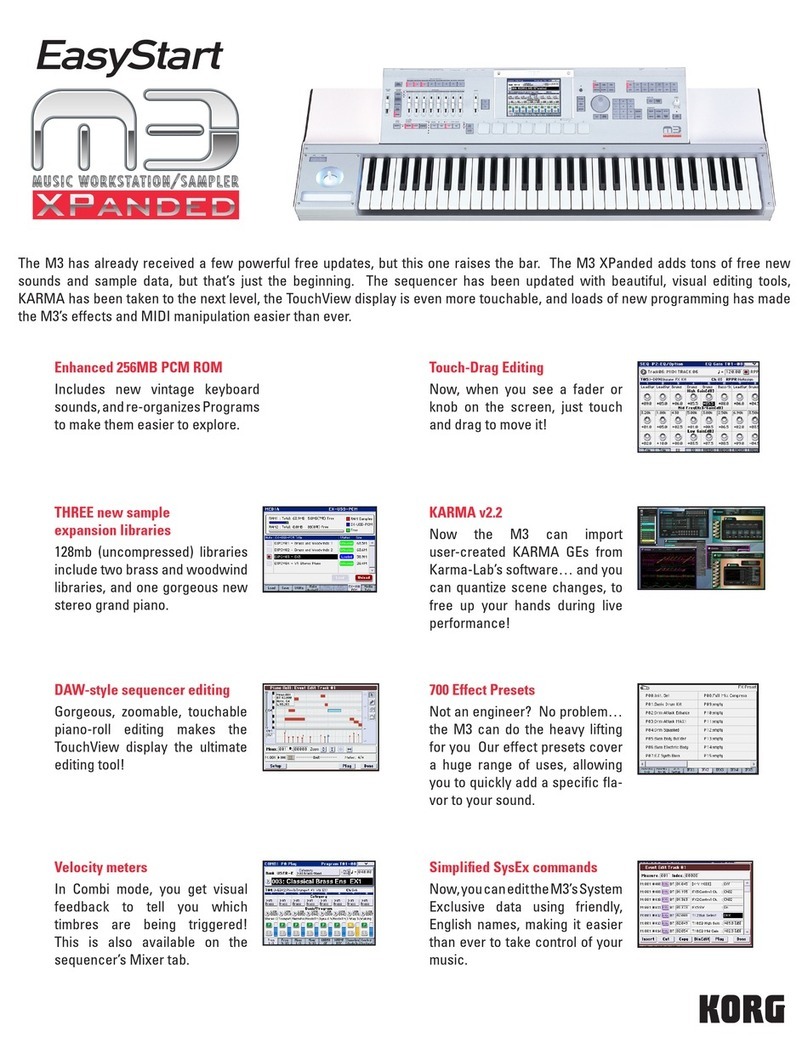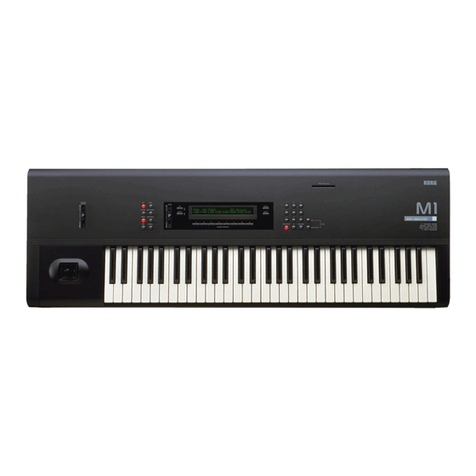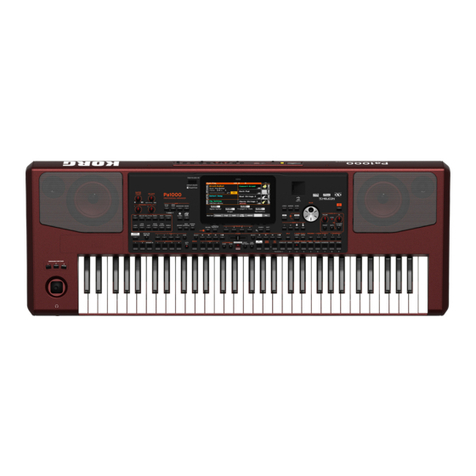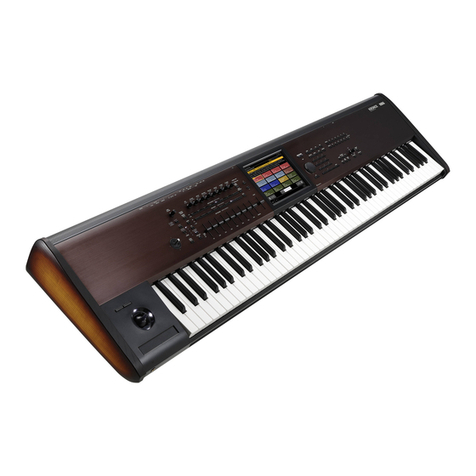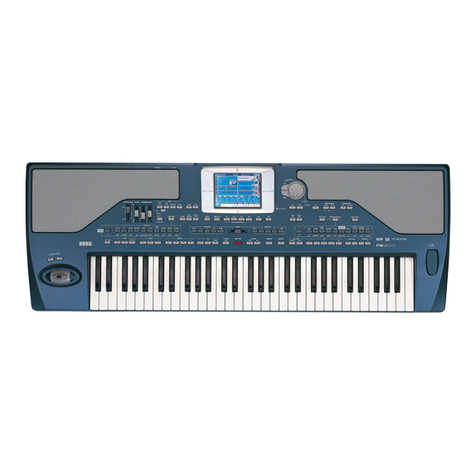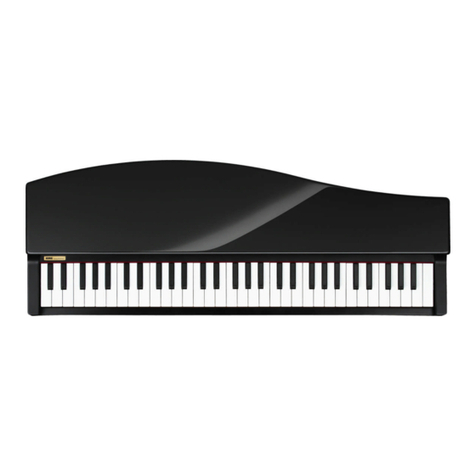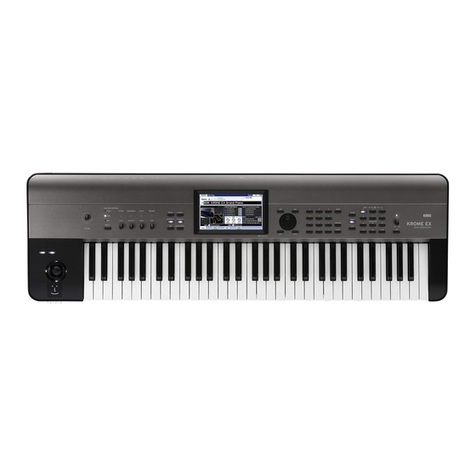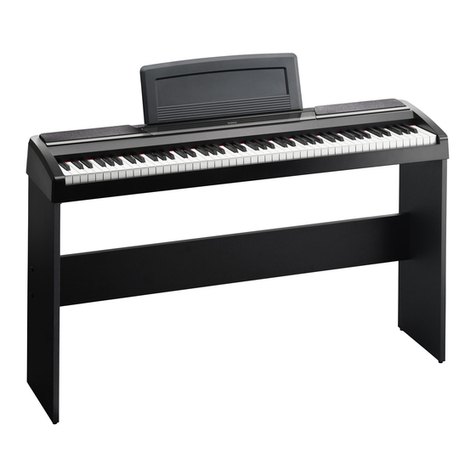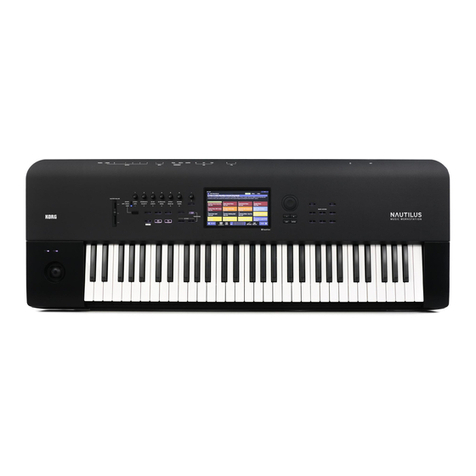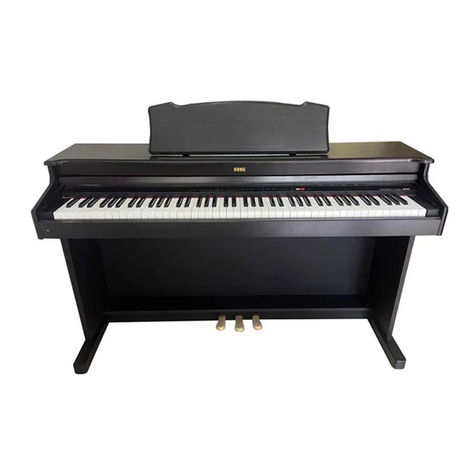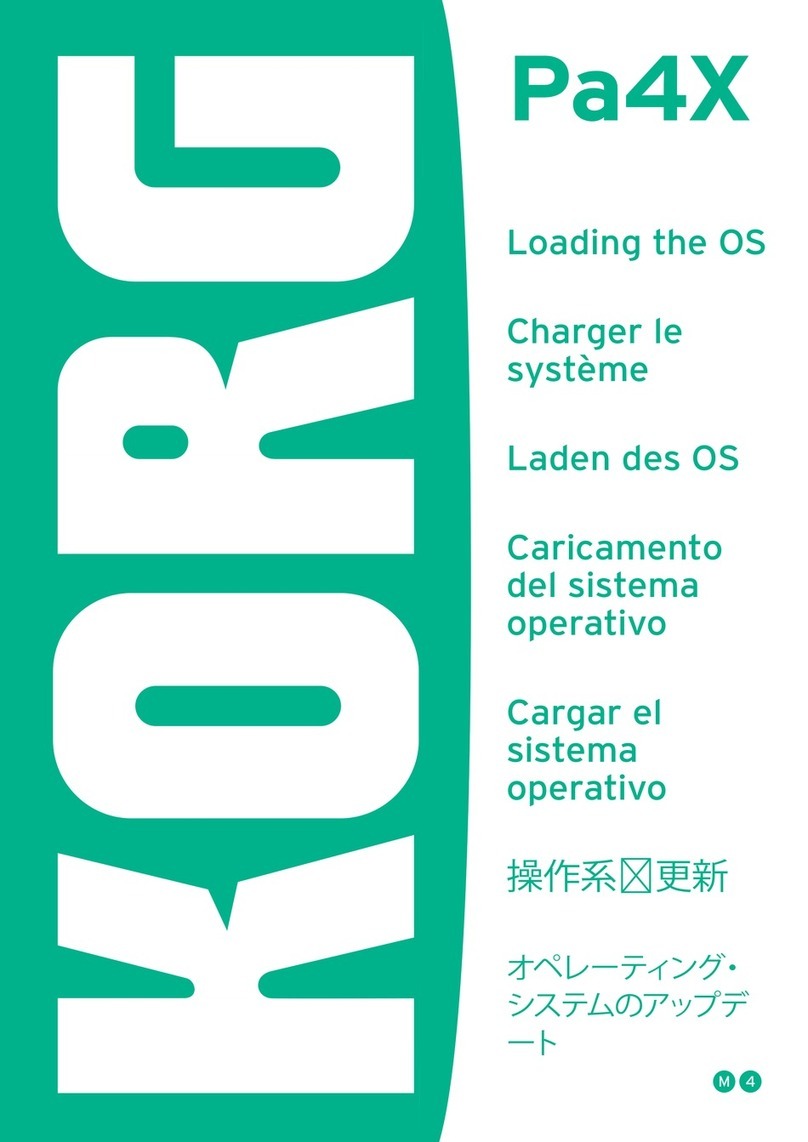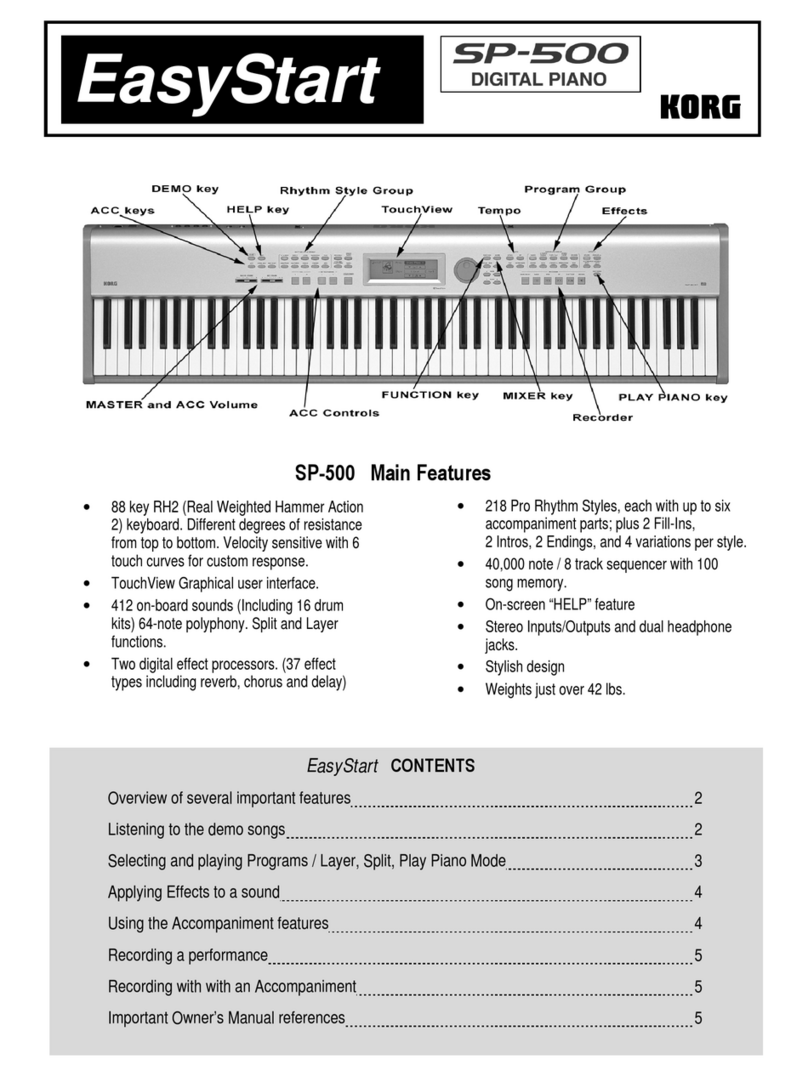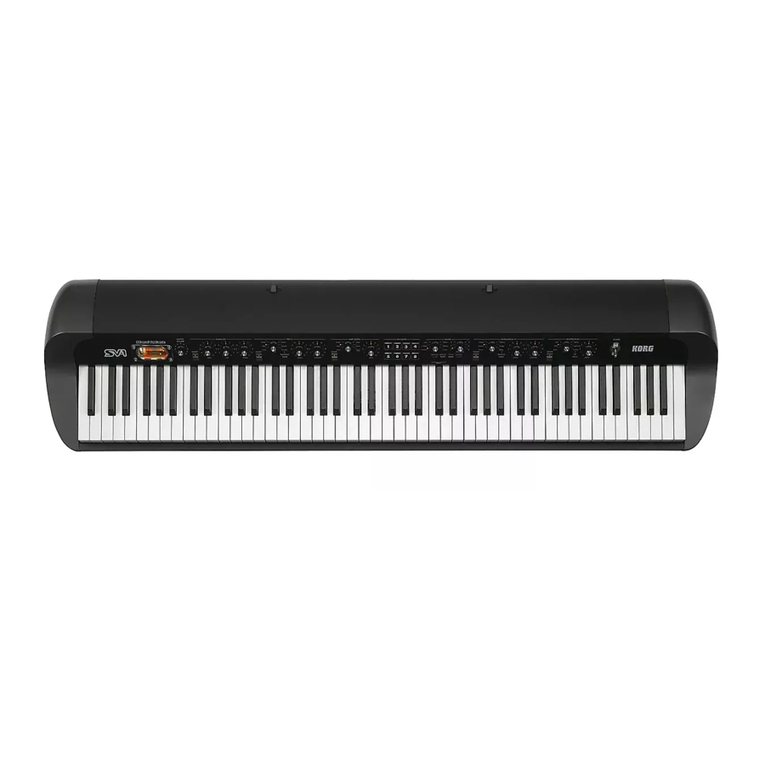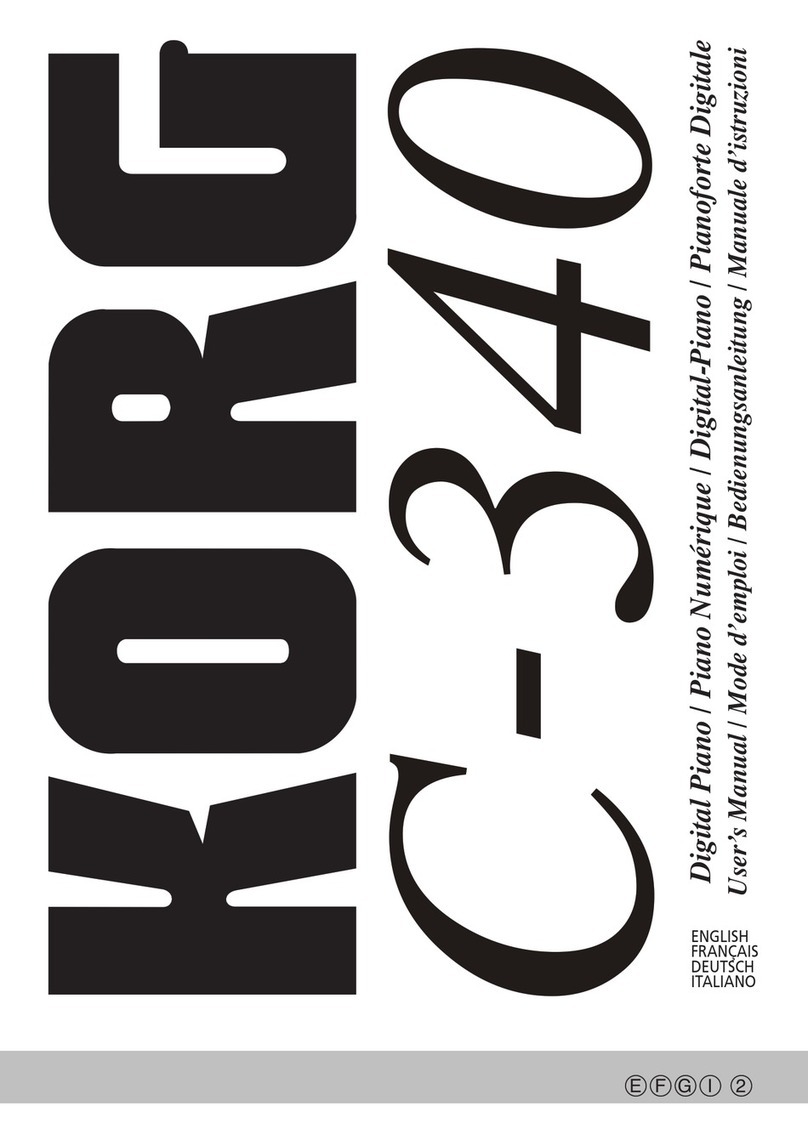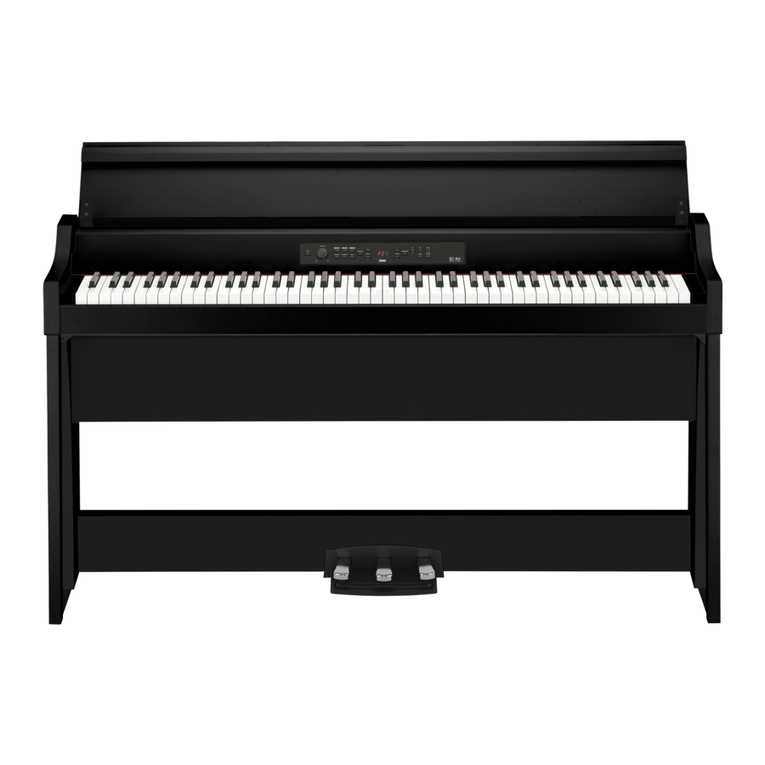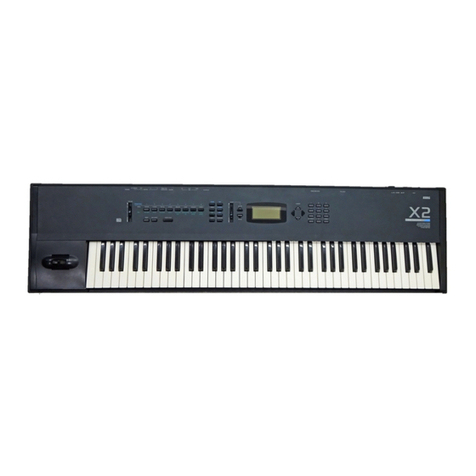
6
C1[24]* C2[36]* C3[48]* C4[60]*
C7[96]* C8[108]*
C5[72]* E5 F5
B3A3
D2B0 E2 F2
24
5
31
24
5
79
10
8631
Down
Up
Reverb On/Off Chorus On/Off
Enabling/Disabling
Program Change
transmission
Control Change
transmission
Preset Sounds (C7–A7)
Demo Songs (C6–A6)
Key Touch
Std.
Transpose (F2–F3)
Light
Heavy
MIDI
DIS
DIS
ENA
ENA
Off
Off
On
On
Piano 1
E. Piano 1
Clav
Vibraphone
P. Organ
E. Organ
Strings
Piano 2
E. Piano 2
Harpsi
FGACD
G A B C D E F
Off
On
A
0 G
3 A
3
Press and hold simultaneously
Confirmation sound On/Off
Key Functions [ ]* indicates MIDI Note number.
Transpose function (Shifting the key)
In some cases, a song may be wrien in a dicult key (e.g.,
using many black keys), or you may wish to shi the key to
match another instrument or vocalist. In such cases, you can
transpose (shi the key) to use an easier ngering, or to use
the same familiar ngering to play in a dierent key. This is
called the Transpose function. You can shi the key in a range
of eleven semitones.
For example if you transpose upward by one semitone, play-
ing the notes shown in the score on the le below will pro-
duce the pitch that’s shown in the score on the right.
• To transpose the key, press and hold down the PIANO
PLAY and SOUND buons, and then press a key from F#2
to B3 or from C#3 to F3. The name of the key that you
pressed will become the transposed key.
For example, if you wish to use the C3 key to play note A2
(lower by three semitones), press and hold down the PIANO
PLAY and SOUND buons, and press the A2 key. If you wish
to use the C3 key to play note D#3 (higher by three semitones),
press and hold down the PIANO PLAY and SOUND buons,
and press the D#3 key.
To reset the Transpose function to “No Transposition (+/-0),”
press and hold down the PIANO PLAY and SOUND buons,
and then press the C3 key.
The default seing (when you turn on the unit) is “No Trans-
position.”
Pitch Control function (Tuning)
When you’re playing together with other instruments, you
can use this the Pitch Control function to x any slight dier-
ences in pitch between instruments. You can adjust the tun-
ing of the SP-170DX in half-step (0.5) Hz intervals over a range
of 427.5–452.5 Hz (Hertz) by using the E5 and F5 keys.
• Press and hold down the PIANO PLAY and SOUND but-
tons, then press the E5 key to lower the pitch in 0.5Hz steps
each time your press it, or press the F5 key repeatedly to
raise the pitch in 0.5Hz steps each time you press it.
• To reset the pitch to 440Hz, press and hold down the PIA-
NO PLAY and SOUND buttons, and press the E5 and F5
keys simultaneously.
The default seing (when you turn on the unit) is A4=440Hz.
MIDI
Please visit the Korg website (hp://www.korg.com/) to view
the MIDI Implementation Chart.
Using the MIDI OUT jack
The MIDI OUT jack transmits MIDI messages. When you play
the keyboard, the MIDI messages will be output to control (e.g,
play the sound of) an external MIDI device. Use an optional
MIDI cable to connect the MIDI OUT jack of the SP-170DX to
the MIDI IN jack of an external MIDI device.
Changing the MIDI channel
If you’re using the SP-170DX as a controller to play sounds from
a connected MIDI device, the MIDI channel of the SP-170DX
must match the MIDI channel the external MIDI device.
To change the MIDI channel (1–16) that MIDI data is being
transmied from via the MIDI OUT jack on the rear panel, press
and hold down the PIANO PLAY and SOUND buons simulta-
neously, and press one of the keys ranging from C4 to D#5.
The default MIDI channel (when you turn on the unit) is “1.”
Transmitting Program Change and Control
Change messages
You can change the program number of the connected MIDI
device from the SP-170DX.
When you select a preset sound on the SP-170DX (see “Playing
Different Sounds” on page 2), it transmits a MIDI Program
Change number (PC#) as shown in the table below. To dis-
able this transmission (DIS), press and hold down the PIANO
PLAY and SOUND buttons simultaneously, and then press
the G#3 key. To enable this transmission (ENA), repeat the
previous procedure but press the A3 key instead.
The SP-170DX also transmits Control Change messages to con-
trol Damper (CC64), Bank Select (CC00), etc. for the connected
MIDI device. To disable this transmission (DIS), press and hold
down the
PIANO PLAY and SOUND buons
simultaneously,
and then press the A#3 key. To enable this transmission (ENA),
repeat the previous procedure but press the B3 key instead.
The default seing (when you turn on the unit) is ENA (trans-
mied) for both Program and Control Change messages.
Program Change Table
BANK#
PC# Sound
BANK#
PC# Sound
0 0 Piano 1 0 7 Clavichord
0 1 Piano 2 0 11 Vibraphone
0 4 E.Piano 1 0 19 P.Organ
0 5 E.Piano 2 0 16 E.Organ
0 6 Harpsichord 0 48 Strings
CC00: Bank Select (MSB) for each sound is assigned to 121
